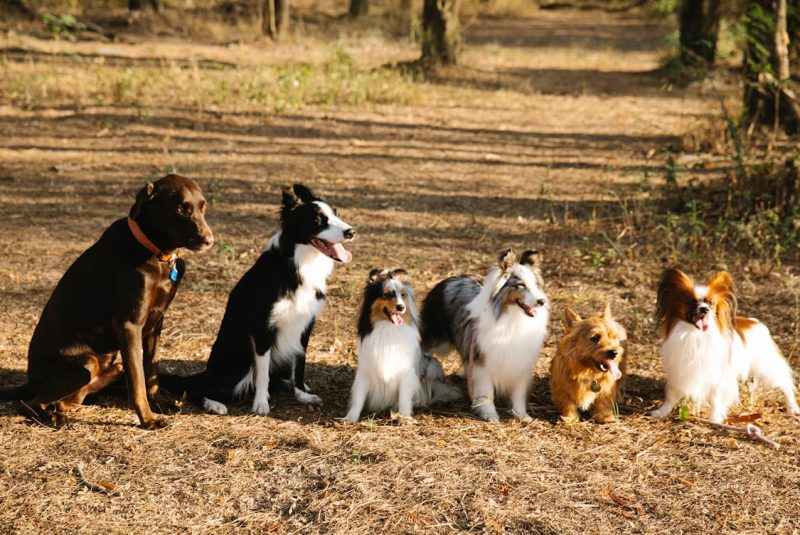People often ask whether dog breeds can predict a dog’s temperament, and the short take is that breed labels offer useful clues but stop short of prophecy. Genetic blueprint and selective breeding set the stage for certain behavior patterns, yet life experience writes much of the script that follows.
A friendly Labrador and a reserved Basenji might share a name like “dog,” but their breed-linked tendencies, early handling, and training histories push temperament in different directions.
How Genetics Set Baseline Tendencies
Genetic background supplies a baseline of likely tendencies that breeders amplified for work or show over generations. Traits such as prey drive, guarding instinct, or herding focus often trace back to ancestral roles and selective breeding lines.
Those inherited propensities form a canvas on which later learning paints color and detail, with some strokes easier to predict than others. Still, genes act like a script draft rather than a finished screenplay.
Early Life And Critical Social Windows
Puppyhood contains critical windows when social exposure shapes fear responses, play style, and human trust levels in lasting ways. Gentle handling, varied sights and sounds, and positive neighborly contact help buffer genetic risk for shyness or reactivity.
Missing those early chapters can amplify stress and create habits that run counter to breed expectations. A well-started pup often demonstrates more adaptable temperaments even when initial breed signals pointed elsewhere.
Role Of Training And Consistent Leadership
Training methods and the style of leadership owners provide alter the likelihood that breed tendencies surface or soften. Clear rules, timely rewards, and predictable routines teach dogs what to do with their instincts, whether that means herding without nipping or guarding without snapping.
Inconsistent signals can confuse a dog and intensify unwanted behaviors, while steady guidance channels natural drives into useful outlets. Pretty much any breed can learn manners if the approach fits the dog’s wiring.
Socialization With People And Other Animals
Positive encounters with humans and other animals expand a dog’s comfort zone and lower the odds of fear-driven responses. Dogs that meet a range of people, ages, and species tend to treat novel situations with curiosity rather than alarm.
Lack of early exposure often leads to situations where a dog “barks first, asks later,” which tests owner patience and the dog’s future options. Social skills are learned, and repeated safe practice cements calm reactions.
Breed Groups And Typical Behavioral Patterns

Breed groups—herding, sporting, working, hound, terrier, toy, and non-sporting—carry shorthand clues about activity level, focus, and interactions with people. Herding dogs frequently show high drive and attention to movement, while hounds may follow scent with single-minded purpose, and terriers often exhibit a lively, tenacious streak.
Those group tendencies help narrow expectations for energy needs and training style when choosing a companion. Still, within-group variation keeps choice from turning into a straight line.
When Stereotypes Lead Us Astray
Stereotypes such as “big dogs are gentle” or “small dogs are yappy” miss the nuance of individual temperament and history. Overreliance on breed labels can mean overlooking red flags or missing a match that would have fit like a glove.
Judgment based on photos and rumors alone risks poor fit and eventual heartbreak for both human and hound. Better to treat breed notes as one item on a shopping list, not the only item.
Tools For Assessing Individual Temperament
Behavioral assessments, trial visits, and foster arrangements reveal far more about a dog’s likely day-to-day behavior than pedigree papers. Short interactions show friendliness, resource guarding, and tolerance thresholds, while longer stays reveal coping style under stress.
Professionals use structured tests and observation to map strengths and triggers that raw breed talk cannot capture. A careful meet-and-greet gives practical evidence of temperament beyond breed assumption.
Picking A Dog With Temperament In Mind
When shopping for a companion, outline must-haves like patience with kids, tolerance of other pets, or low reactivity to strangers before looking at photos. Ask breeders, rescue staff, or foster parents about known behaviors, observe interactions in real time, and request temperament notes from prior caregivers.
If you’re often on the go, you might look into pets known for their travel-friendly temperaments, since they tend to adapt smoothly to new environments and routines.
Try to arrange a trial period so small issues emerge before they become big ones; this approach saves time and heartache. The right match blends breed signals with real-world proof of fit.
How Environment Modifies Breed Tendencies
Daily routine, housing situation, and family activity levels nudge temperament toward calm or chaos in predictable ways. A high-drive breed left with little outlet for energy may develop anxious or destructive habits, whereas the same dog with a job and exercise plan often becomes a model citizen.
Enrichment, tasking, and simple play break up monotony and reduce the chance that instinct morphs into mischief. Match lifestyle to likely needs, and temperament shifts from liability to asset.
When Professional Help Makes A Difference
Behaviorists and trainers translate breed-informed hypotheses into practical plans for modification, enrichment, and management. Targeted work can reduce fear, reactivity, or obsession in ways that improve life for dog and owner both.
Early intervention often shortens the road to calm, while late fixes can still change outcomes if the work is steady and specific. Seeking skilled guidance is a smart move when temperament threatens harmony at home.








